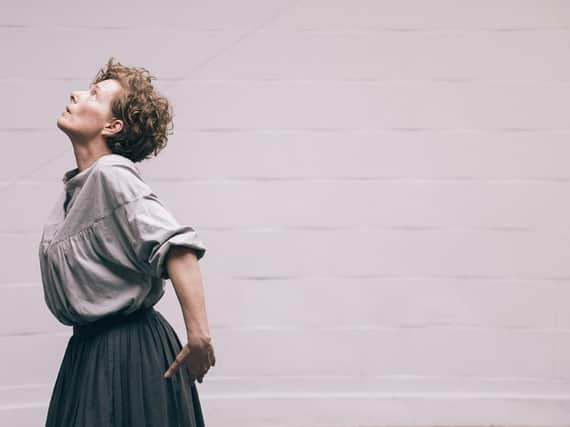Yorkshire woman's years in West Riding Pauper Lunatic Asylum inspires new opera


It is 1837 and Doncaster-born piano mistress Mary Frances Heaton is deemed dangerous and insane after causing a disturbance for having not received payment from one of her clients.
She is admitted to the West Riding Pauper Lunatic Asylum in Wakefield, remaining incarcerated in institutions right through until her death four decades later.
Advertisement
Hide AdAdvertisement
Hide AdDuring her time there, her creative resolve saw her turn to embroidery, documenting her experiences and injustices through ornate stitched samplers.
These, along with Mary’s surviving medical records, have inspired a new opera and theatre piece.
The Unravelling Fantasia of Miss H. has been devised by performance company Stitched-up-theatre, with the musical score and libretto based on Mary’s true story.
“The thought of a 19th century asylum sends shivers down everybody’s spine,” says actor and singer Red Gray, who conceived the company in 2018. “But also this is all about the human story.
Advertisement
Hide AdAdvertisement
Hide Ad“Mary’s experience seems to be a representation of the extremes of how good or how bad life can be.
“She had a lot of good fortune when she was younger – she had a great education and opportunities, putting her in a much better position than a lot of women.
“But even like that women didn’t stand a chance and she was then thrown into the worst case scenario of what a woman could expect which was basically to be shut away, ignored and not listened to.
“She represents heaven and hell in a way and you don’t get much more dramatic than that when you’re trying to portray something artistically.”
Advertisement
Hide AdAdvertisement
Hide AdRed first came across Mary’s story, which has also been the subject of research and creative arts projects by the Forgotten Women of Wakefield project, a group working to unearth stories of women from the city’s history and to celebrate their achievements in the form of blue plaques, in 2016 at a London exhibition on asylums.
It featured a snapshot of her tale alongside a number of the samplers she had stitched. "It stirred something within me,” she says, “and I thought wow I need to respond to this.”
Red set about researching all she could about Mary’s story, travelling to the region to Wakefield’s Mental Health museum and working with West Yorkshire Archive Service to access her remaining medical records.
“There are so many wonderful anecdotes in (them),” Red says. “She had a cup of tea one day, for example, and there was a fly in the tea. She thought it was a sign that wings were coming from the heavens to take her out of the institution to escape. She later realised she had been deluded. Those little anecdotes lend themselves really well to theatre and music.”
Advertisement
Hide AdAdvertisement
Hide AdThe company was due to tour its live opera performance in Yorkshire this year, whilst running a series of ‘expressive’ embroidery workshops for women’s community groups. Those plans were put on hold by the coronavirus pandemic and are now being arranged for 2021-22, alongside a sound and visual installation, created by artistic producer and documentation artist Luan Taylor, inspired by Mary’s time in the asylum.
In the meantime, the company has adapted the show, creating an audio-play of Mary’s story by recording music and dialogue at home. Textile artist Lola Spinks also designed embroidery packs, which were sent out to women across Yorkshire, accompanied by online tutorials.
The audio-play is available at artstogetherleeds.co.uk/event/the-unravelling-fantasia-of-miss-h-by-stitched-up-theatreFor more information on the opera, visit www.stitched-up-theatre.com